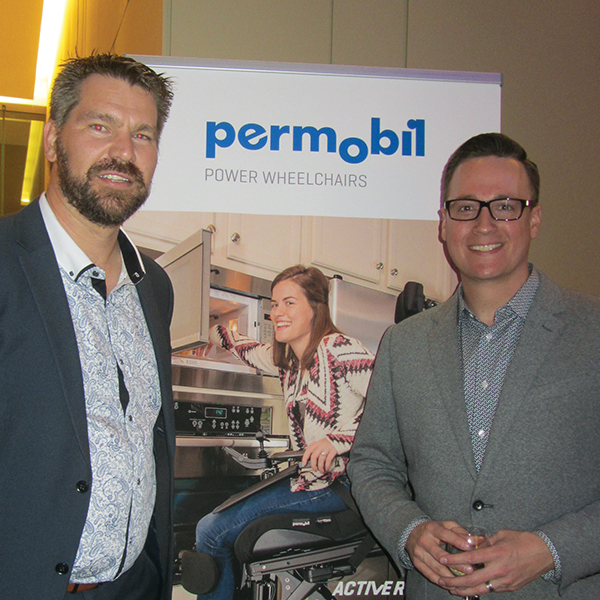When it comes to the rehabilitation sector Australia is a very sophisticated market. “The future of the rehabilitation sector is about connected technology and for a global company like Permobil that is what is being developed,” Permobil Americas senior vice president of sales, Todd Walling said.
Speaking to F2L in Sydney during his first visit to an ATSA Expo, Walling said: “The Internet of Things (IoT) is the buzzword in the industry and Permobil wants to be the first company to bring connected technology to wheelchairs. And not just to power wheelchairs but manual wheelchairs as well.” As Walling sees it if you live in a remote area and have issues with your wheelchair, the dealer will be able to get into their chair remotely, diagnose the problem, order the parts and go into the field equipped with everything and ready to go. “We also hope to take that to the next level so people can access their home to open the garage door for instance, being able to connect to everything in their daily life from their wheelchair. If the technology exists people in wheelchairs should have access to the same technology as everyone else.”
He said.Australians are eager adopters of new technologies and those in the disability sector are quick at picking up on new devices. “We have seen rapid growth in the market over the past six years due to the fast acceptance of new technology and new innovation.” And the introduction of the National Disability Insurance Scheme (NDIS) puts Australia in a very progressive position. “What the NDIS says to me is that Australia is doing everything it can to promote assistive technologies (AT). It aligns with the Permobil mission statement that every person has a right to have access to all the current technology available. The NDIS is similar to the Scandinavian system which gives users more choice in the products they receive. In the US, and most other western countries, it is a different situation where the end user does not have any choice in what they receive or, have limited choice from government funding which dictates what they can get.”
Walling said there will be challenges as the funding processes change resulting in a learning period for providers and therapists. “As the scheme evolves I expect there will be a dip in delivery times, getting the right product to the end user and confusion with paperwork, but once these issues are resolved the benefits will be there for the end user.”
The biggest selling Permobil product in Australia is the front wheel drive wheelchair but the introduction of the new mid-wheel drive models are expected to change this sales scenario. “Permobil was traditionally a front wheel drive company but since the introduction of the mid wheel drive years ago, and the more recent release of the M3 and M5, we expect the Australian market will adopt these products and turn mid wheel drive into a popular drive platform.” Mid wheel drive is extremely popular in many parts of the world, he said, due to it being highly intuitive to new users with the capacity to perform well indoors. “The smaller turning radius in MWD chairs is perceived to be advantageous. We believe our new M3/M5 will take this to the next level by providing the benefits of MWD but making sure the user experience isn’t compromised when going outside.”
Walling’s parting words were his impressions of the ATSA Expo, describing it as a unique event. “Because it is not just a dealer or clinician focused show end users can visit too, so it is quite unique in that aspect.”
Todd Walling pictured with Permobil Australia managing director, Owen Dawes.

